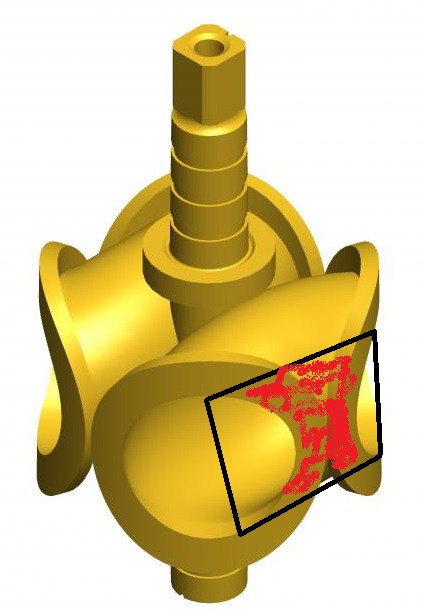Page 1 of 1
No oil valves?
Posted: Fri Jan 26, 2024 8:30 am
by Grumpikins
Just saw a video on a french horn whereby they said it has composite (plastic) valves (rotary) that dont need to be oiled. Said they're very light and very fast. Anybody familiar with these? More info please. Just curious. Why not on a tuba.
Sent from my SM-S367VL using Tapatalk
Re: No oil valves?
Posted: Fri Jan 26, 2024 9:52 am
by Mary Ann
The make that I know of that does (did?) that is Finke. Plastic rotors. A friend had a Finke and I have no idea whether he oiled his valves or not, but I didn't hear complaints.
Re: No oil valves?
Posted: Fri Jan 26, 2024 10:04 am
by C J
Re: No oil valves?
Posted: Fri Jan 26, 2024 2:01 pm
by bloke
Years ago, a friend of mine purchased a single high F Finke descant horn with plastic valves.
They would stick. They sold it.
Re: No oil valves?
Posted: Fri Jan 26, 2024 3:37 pm
by Grumpikins
C J
Thank you, very interesting. So the gist is that plastics swell and shrink more greatly.
Sent from my SM-S367VL using Tapatalk
Re: No oil valves?
Posted: Fri Jan 26, 2024 5:33 pm
by BRS
.
Re: No oil valves?
Posted: Fri Jan 26, 2024 5:58 pm
by DonO.
I’m certainly no scientist, but it seems logical to me that the valves, with their close tolerances, would operate best if the casings and valve body are made from the same material, or, if the materials are different, they should at least have similar coefficients of thermal expansion. The casings will just about always be brass. Thus, the best operating valve bodies would also be brass (nickel plating being too thin to make any meaningful difference in this application). Not sure about the coefficient of expansion for stainless steel or Monel valves. It seems obvious that this would be critically important for pistons. Not sure about the importance for rotors though. I had my old MW 25 apart and as I remember the rotor bodies were more copper colored. I think someone somewhere told me they were beryllium copper? I can definitely see plastic valves being problematic, especially if they expand in higher temperatures more than their brass casings. As far as other materials, like carbon fiber, I don’t know, but seems like the engineer types to design these things would take coefficient of thermal expansion into consideration.
Re: No oil valves?
Posted: Fri Jan 26, 2024 7:37 pm
by bloke
I still think one of the most clever things with rotary tubas was (a few decades ago) soldered-together hollow valves. It's not difficult to imagine how they might be made. The center part and top and bottom discs would be turned out of one chunk of brass, a piece of tapered tubing would be slipped over it and soldered in place, and then a couple of butterfly pieces that sort of look like panty liners would be soldered onto that cone shaped sheet metal. Of course they would have to be lapped into casings, just as with any rotor.
Haven't tried any of those minimalist rotors that I've seen in still photographs.
Re: No oil valves?
Posted: Sat Jan 27, 2024 6:08 am
by Oedipoes
Re: No oil valves?
Posted: Sat Jan 27, 2024 9:13 am
by peterbas
.
Re: No oil valves?
Posted: Sat Jan 27, 2024 10:32 am
by bloke
yes...That's one of those to which I was referring...
...though I've never understood what this tuba manufacturer (along with some trombone valve manufacturers) views
these structures as doing anything beyond adding weight (at the worst possibly places: at the circumferences of such structures) while also building in unnecessary bore restrictions.

- chalk it up to bloke's ignorance.JPG (50.82 KiB) Viewed 2099 times
Re: No oil valves?
Posted: Sat Jan 27, 2024 5:18 pm
by peterbas
.
Re: No oil valves?
Posted: Sat Jan 27, 2024 6:27 pm
by bloke
Spectators - well over a century ago - used to accuse Herbert Clarke of using some sort of rotating ball bearings mechanism in his cornet to play all those fast notes.

Re: No oil valves?
Posted: Wed Jan 31, 2024 3:29 pm
by pjv
Reminds me a bit like what Kanstul was doing with their CR valve.
Re: No oil valves?
Posted: Wed Jan 31, 2024 5:47 pm
by bloke
Several decades ago, Miraphone's 21.2 lmm rotors were considerably larger in diameter than those made today. Today's are basically the same rotor bodies as 186 rotor bodies, but they are just cut out with a larger bore, and with less space between the two cutouts.
When I had one of those Miraphone made B&S PT15 knockoffs for a short time (bought to flip), I drilled out as much material from that fourth rotor body as I possibly could - hoping that making it weigh less would speed it up a bit. It really didn't do much good at all, because (I suspect that) the additional surface contact with a rotor that large was the main issue, whereas the weight was a lesser issue.